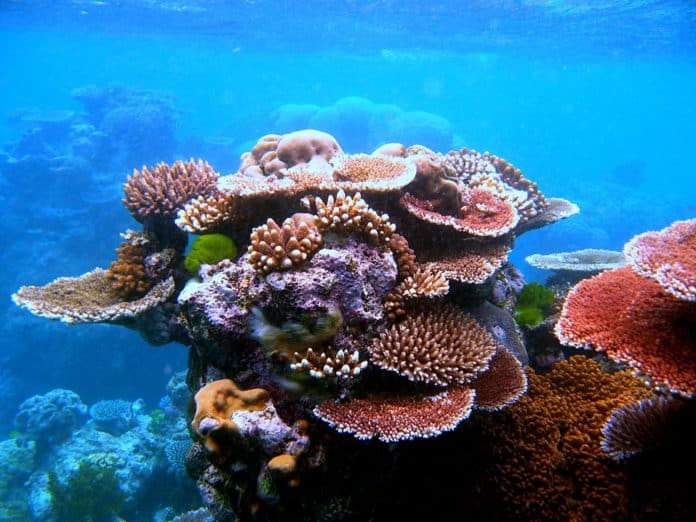Corals on the Great Reef Shoot Up Protective “Cloud Umbrella” to Chill
The Great Barrier Reef—which, at 1,400 miles long, is the longest and largest coral reef in the world—was blanketed by dangerously hot water in the summer of 2016. This heat strangled and starved the corals, causing what has been called “an unprecedented bleaching event.”
Though that bleaching event was reported at the time, scientists are just starting to understand how catastrophically transformative it was.
The corals that build reefs are actually a collaboration between animals (the coral proper) and single-celled algae that form a symbiotic relationship with corals, providing them with nourishment. At high temperatures, this relationship breaks down and causes the corals to lose their photosynthetic guest. The reefs turn white, giving bleaching its name. And, if recovery doesn’t happen quickly enough, the corals will starve, causing a mass die off. Complicating matters, different species of coral will bleach at different temperatures and recover at different rates.
As a result, there’s no single outcome of a bleaching event. It depends on what was growing on the reef to start with, as well as the dynamics of the recovery.
But by all appearances, the 2016 bleaching event on the Great Barrier Reef was a severe one. Temperatures were extraordinarily high, especially on the northern portions of the reef, and the resulting bleaching was extensive.
Now, a new study has found that corals are making ‘cloud umbrellas’ to stay cool and fight the heat. The team’s analysis of a 15-year time series of satellite-derived data on atmospheric aerosols over the reef revealed that corals are seemingly protecting themselves from ‘stresses’ – such as high water temperatures and high irradiance and the bleaching events related to them – by producing and releasing aerosols into the atmosphere to create an ‘umbrella of cloud cover’ to help cool them down.
“Until recently, scientists didn’t really appreciate that corals could produce these compounds that end up in the atmosphere and are converted through chemical reactions to aerosols,” Associate Professor Gabric said.
“Corals appear to have this protective mechanism through aerosol production. What happens to these aerosols when they get into the atmosphere is that they reflect incoming solar radiation and can also modify cloud microphysics – they can make clouds brighter and they can make clouds hang around for longer, so it’s sort of like creating a natural umbrella for the reef.”
The team- a collaboration of scientists from the Griffith University, Southern Cross University and the University of Southern Queensland- used the satellite data from an area of about 100 by 100 kilometres centred around Heron Island, which sits in the southern region of the Great Barrier Reef off the Queensland coast.
What they found was that corals under stress due to very strong irradiance (eg during periods of low tides) protected themselves by releasing volatile compounds into the sea which eventually become aerosols in the air above them, contributing to the formation of low level clouds. And the implications of that were found to be quite far reaching.
“The reef does create similar compounds to those produced when you burn fossil fuels, but coral aerosols are naturally produced and they have the same direct affect on incoming solar radiation – they reflect incoming radiation but more than that they change the lifetime and reflectivity of the clouds,” he said.
“The thing we know least about climate change is how both natural and anthropogenic aerosol emissions will change in the future. This is critically important because aerosols appear to have a cooling affect, cancelling or masking the warming due to greenhouse gases. And that’s the trillion dollar question – if countries stop producing these polluting aerosols what will happen to the underlying warming?”
“It’s crunch time for coral reefs around the world. There’s been several bleaching events in the last decade. It’s time to do something but it’s not clear how quickly that intervention will happen.”
“The sort of reef management intervention that could be used in the future include geo engineering, like generating artificial aerosols by spraying sea salt into the air above the reef. But on a large scale this would be quite expensive, so we need further research on how best to maintain and encourage natural coralline aerosol emissions.”






























